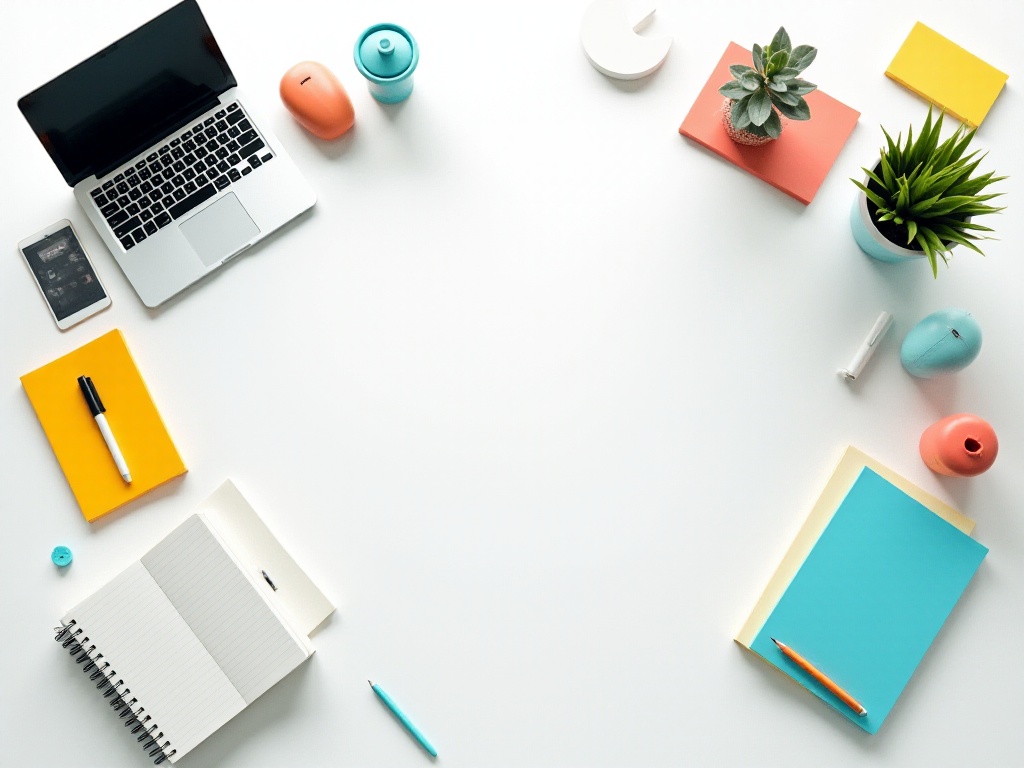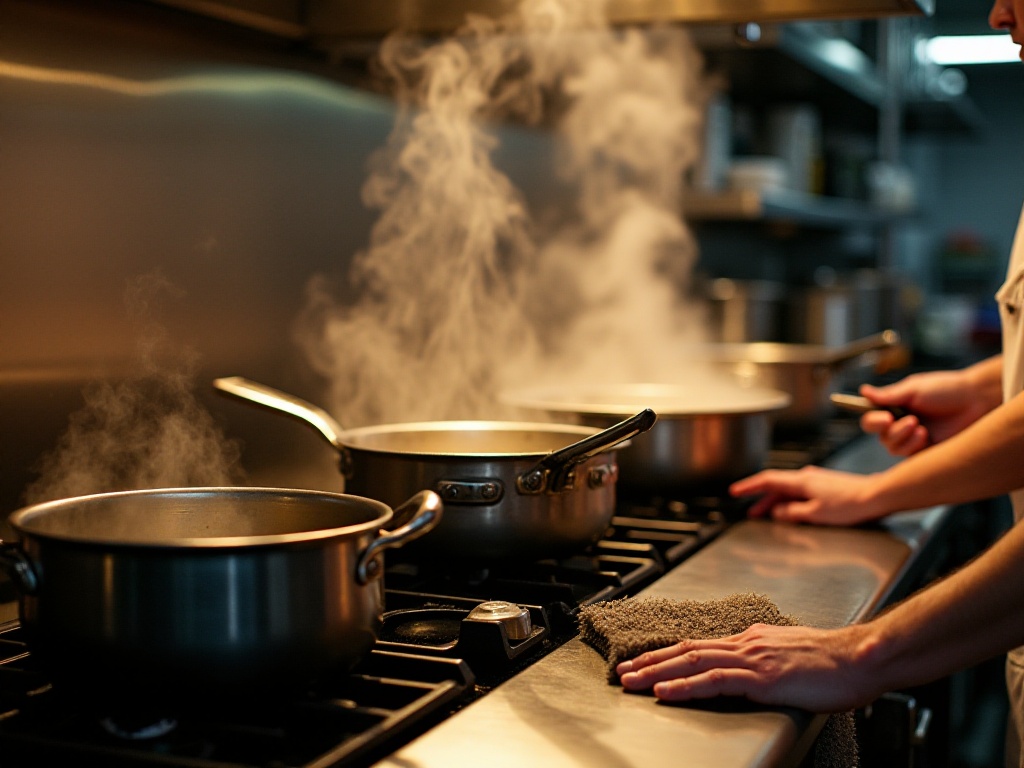
Foreword
Hello everyone! Today I want to discuss a topic that I've struggled with for a long time. It's a bit embarrassing to admit, but I think many of you might share the same concerns. As someone who has had mild OCD since childhood, I used to feel anxious about home organization every day, feeling that everything had to be perfectly neat and clean. However, over the past year, I've slowly realized that pursuing perfect organization not only drains energy but also makes life unnecessarily complicated. After a year of exploration and experimentation, I finally found a storage system that keeps my home tidy without putting too much pressure on myself.
About Me
Looking back to this time last year, I was truly hopeless at organization! Every day when I came home, seeing remote controls and cables scattered across the coffee table, along with randomly placed delivery boxes, made me really frustrated. The study was even worse - my desk was practically a "cable museum" with various chargers and data cables tangled together. Finding a specific cable was a major undertaking. The kitchen was maddening with all its bottles and jars of seasonings - despite having bought so many spice racks and storage boxes, I still had to search everywhere to find the condiments I needed while cooking.
Back then, I spent every weekend organizing frantically, re-categorizing and re-arranging everything, desperately wanting to label every single item. But within days of organizing, my home would return to its messy state. The most extreme example was when I spent an entire weekend just wrapping all my data cables in label paper and storing them by color and length. The result? I still couldn't find what I needed when I needed it, either because the labels fell off or I forgot my own categorization system.

Turning Point
Life is truly amazing - sometimes change comes from the most unexpected moments. Three months ago, during another one of my "weekend organization battles," I was busy wrapping various cables with label paper. The delivery guy saw what I was doing and said with a smile, "Sister, you're making this too complicated. Let me teach you a simple method." At first, I was skeptical, thinking there couldn't be a simple solution for this.
But this delivery guy really changed my perspective on organization. He said he delivers hundreds of packages daily, and if he tried to organize each package perfectly, he wouldn't be able to finish his work in a day. He told me, "The most important thing about organization isn't perfection - it's practicality, making things convenient for yourself." This statement was an eye-opener that made me rethink my approach to organization.
Practical Tips

Electronic Device Management
For organizing electronic devices, my favorite tool now is those small clips from bread bags. This idea came to me during a convenience store bread purchase. These plastic clips are durable and reusable. I now use them to organize all my charging cables, writing labels like "iPhone charger" or "tablet cable" on each clip with a marker. This method is super practical - no more confusion about which cable belongs to which device. Plus, these clips can be attached directly to drawer edges for easy access.
Desktop cable management has also improved significantly. I used to struggle with various chargers and data cables, but now I've attached some cute hooks to the back of my desk with strong double-sided tape and hung all the cables behind it. This keeps the desktop looking neat while maintaining easy access. Recently, I discovered that installing a simple cable tray behind my desk could contain all the power cords. This change made my desktop instantly cleaner, eliminating the sight of annoying cables.
I also bought an inexpensive power strip storage box to house all power strips, leaving only necessary plugs exposed. This not only looks better but also prevents dust accumulation. Additionally, I now regularly check if these electronic devices are still in use - if something hasn't been used for six months, I'll decisively store it away or dispose of it, which helps reduce unnecessary clutter.

Kitchen Revolution
The kitchen transformation has been my most successful organization revolution. Previously, I always wanted to hide everything away, worried that visible items would look messy. This resulted in frantically searching through multiple cabinets just to find soy sauce while cooking. Now I've completely changed my approach and embraced "visible storage."
I placed a large rotating tray on the kitchen counter for my most-used seasonings. This tray is divided into inner and outer circles - seasonings in the inner circle, and small tools like spoons and tongs in the outer circle. While cooking, a simple turn brings everything I need within reach. This change has been incredibly practical, not only saving time searching for items but also making cooking more enjoyable.
The refrigerator organization has also improved greatly. I put a lazy Susan on each shelf, eliminating the need to turn the fridge upside down just to reach yogurt at the back. I've marked different zones on the turntables with a marker, such as drinks, sauces, and snacks, making everything easily identifiable at a glance.
To make kitchen organization more systematic, I've labeled all storage boxes, but not with the previous detailed labels - instead with simple categories like "breakfast," "snacks," "seasonings." This rough categorization actually works better than the previous meticulous labeling, as it gives items some flexibility and prevents the confusion of not knowing where to put something when it doesn't fit perfectly into any category.

Clothing Storage
When it comes to clothing storage, I've learned from many mistakes. I used to think clothes had to be folded perfectly like store displays, with every crease aligned. This turned clothing organization into a time-consuming task, and I'd often leave worn clothes in a pile because I didn't want to fold them carelessly, making things even messier.
Now I use a super practical "three-second rule" - if it takes more than three seconds to find a piece of clothing, the storage system needs improvement. Based on this principle, I reorganized my wardrobe into daily, work, and special occasion sections. Each section uses different colored hangers - white for daily wear, black for work clothes, and gold for special occasions. This makes it easy to locate the right section at a glance.
To make clothing storage more efficient, I've made some detailed changes. For instance, I group similar types of clothes together, like all T-shirts in one place and all jackets in another. At the start of each season, I place the most frequently worn clothes in easily accessible locations and store other seasonal items away. This not only saves time finding clothes but also prevents the hassle of searching through everything.
For folded clothes, I now use a simple method: fold clothes in half twice, without pursuing perfect creases. I discovered that pursuing perfection actually reduces daily efficiency. Plus, this simple folding method is easier to maintain - you're less likely to just toss clothes aside because folding seems too troublesome.
Unexpected Benefits
This simple storage system has brought changes far beyond just keeping my living space tidy. The biggest gain has been rediscovering life's rhythm and joy. I used to spend so much time on organization, worried about misplacing things, and ended up missing out on many moments I could have enjoyed.
Now I finally have time to sit on the balcony, leisurely enjoy a hand-brewed coffee, read that novel I've been looking forward to, or invite long-unseen friends over for a chat. I no longer worry about the house being too messy to have guests, because the current storage system is simple and efficient enough to maintain tidiness with minimal effort.
What surprised me most was how this change affected my work efficiency. With less energy spent on organization, my mood became lighter, and I worked more efficiently. Plus, through this change in organization methods, I learned many lessons about time management and efficiency improvement that have greatly helped in my work.

Advice for Beginners
If you're also struggling with organization, my advice is not to try solving all problems at once. Start with the area that bothers you most, like your desk or makeup table, and give yourself a week to try new organization methods.
Before making changes, observe your usage habits first. Notice which items you frequently use and which can be stored away - this helps design an organization system that truly suits you. Don't blindly copy those perfect-looking organization images online, because everyone's living habits and needs are different.
I suggest starting with these small steps: First, clear out things you haven't used in a long time - only what remains needs organizing. Then find easily accessible fixed locations for frequently used items, so you'll know where to put them after use. Finally, try some simple organization tools, but don't get too many - just enough is fine.
Remember, organization isn't the end goal - making life easier is our objective. A perfect organization system doesn't exist; finding what works for you is most important.

New Perspectives
Through this change in organization habits, I've gained new insights about life. Perhaps many things in life are like this - pursuing perfection excessively might make us lose what's most important. Like organization, what matters isn't having every item perfectly placed, but making the space truly serve our lives.
Now I prefer spending time on truly important things, like being with family, learning new knowledge, and developing hobbies. I've understood that life's beauty isn't in its perfection, but in how comfortable and natural it feels.
This change in mindset has affected other aspects of my life too. At work, I no longer pursue flawless solutions but focus more on practicality and efficiency; in relationships, I've learned to be more accepting and understanding, no longer demanding others meet my standards.
Actually, the process of organization is, in some ways, a process of understanding yourself and life. Through continuous adjustment and improvement, we can better understand what's truly important and what we can relax about. This sense of balance is what we really need.
Finally, I especially want to say that change doesn't need to happen overnight - take it slow and find your own rhythm. Like my current organization method - it might not be perfect, but it's perfect for me.
Do you have any unique organization tips? Or have you experienced similar struggles? I'm looking forward to seeing your stories and experiences in the comments!
Next
Life Hacks: 50 Home Living Tips You Might Not Know About to Make Your 2025 Easier and More Fun
A comprehensive guide exploring life hacks, their core definition, and practical applications in household management and daily life optimization, offering accessible methods to improve efficiency and solve everyday challenges
Super Practical Home Tips I've Summarized from 1,000 Life Hacks - Easy to Learn
A systematic exploration of life hack categories and applications, covering daily convenience techniques, household cleaning, kitchen food preparation, analyzing their cost-effective characteristics and distribution across various platforms
These Super Practical Home Management Tips Will Boost Your Life Efficiency by 300%
A comprehensive guide to practical life hacks covering home organization, food preservation, and cleaning maintenance, including storage solutions, food saving methods, and daily cleaning tips for improving home life quality and efficiency
Next

Life Hacks: 50 Home Living Tips You Might Not Know About to Make Your 2025 Easier and More Fun
A comprehensive guide exploring life hacks, their core definition, and practical applications in household management and daily life optimization, offering accessible methods to improve efficiency and solve everyday challenges

Super Practical Home Tips I've Summarized from 1,000 Life Hacks - Easy to Learn
A systematic exploration of life hack categories and applications, covering daily convenience techniques, household cleaning, kitchen food preparation, analyzing their cost-effective characteristics and distribution across various platforms

These Super Practical Home Management Tips Will Boost Your Life Efficiency by 300%
A comprehensive guide to practical life hacks covering home organization, food preservation, and cleaning maintenance, including storage solutions, food saving methods, and daily cleaning tips for improving home life quality and efficiency

